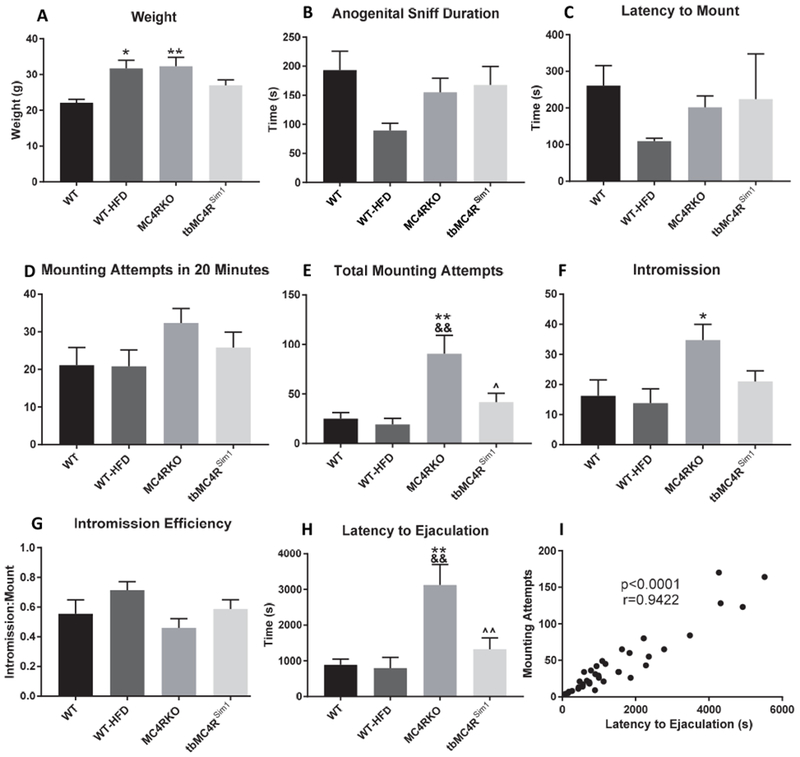Fig. 2.

Sexual behavior in WT (n=9), WT-HFD (n=5), MC4RKO (n=9), and tbMC4RSim1 (n=10) mice. (A) WT-HFD mice were weight-matched to MC4RKO mice and both groups weighed significantly more than WT controls. (B) Time spent in the anogenital sniffing phase was not different across groups. (C) Latency to mount phase was not different across groups. (D) Mounting attempts within the first twenty minutes of sexual behavior was not different across groups. (E) Mounting attempts between MC4RKO and all other groups was significantly different. (F) Intromission number was not significantly different between groups. (G) The ratio of successful intromission to mounting attempts, an indicator of intromission efficiency, was not significant across groups. (H) Latency to ejaculation was significantly increased in MC4RKO mice compared to all other groups. (I) There was a significant correlation between latency to ejaculate and mounting attempts. *=compared to WT, &=compared to WT-HFD, ^=compared to MC4RKO
